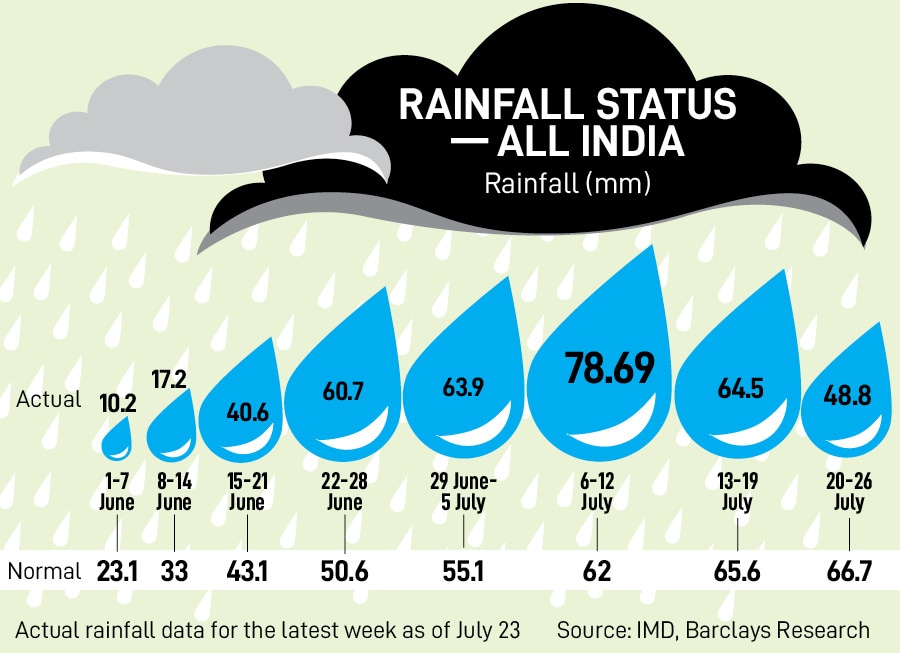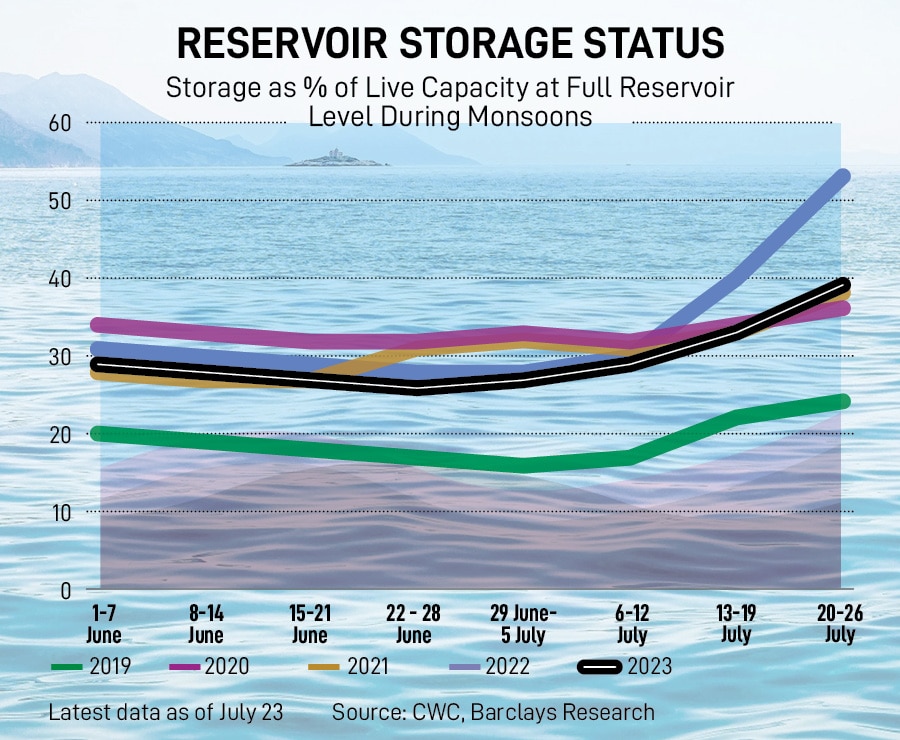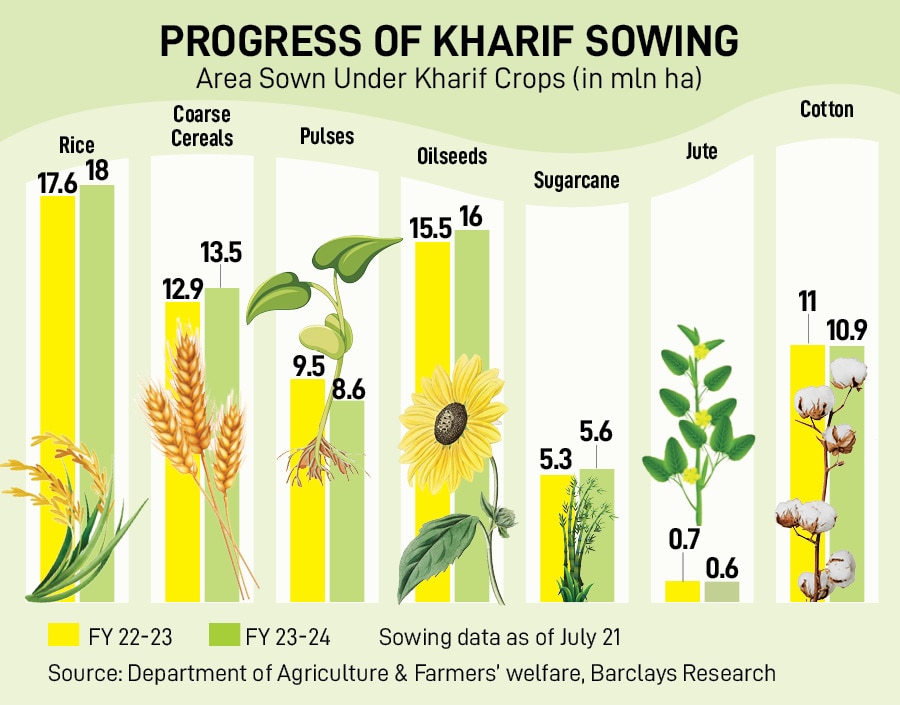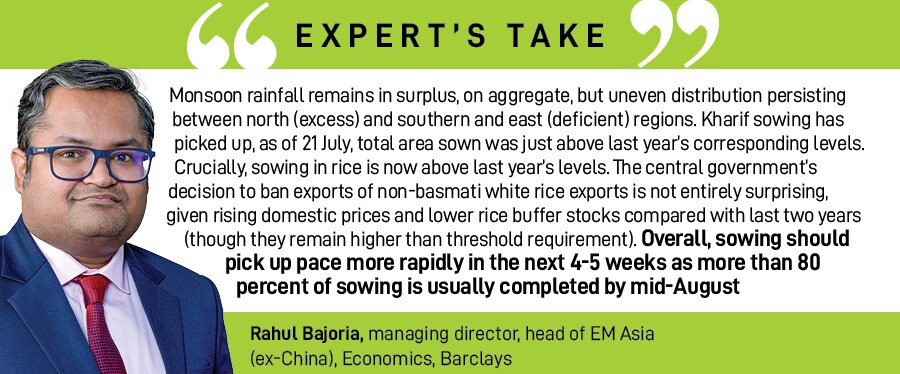Rain Watch for July 20-26: Surplus monsoon, sowing of rice improves
Forbes India's Rain Watch series simplifies rainfall status, water reservoir levels and sowing pattern of kharif crops, using data analysis by Barclays


As India entered the eighth week of monsoon in the period July 20-26, monsoon rainfall was in surplus with geographical distribution of rains still uneven over the past week.
While the intensity of excess rains over the northwest region reduced providing some relief of flooded areas, the southern and eastern regions continued to face deficient rains. Within central region, areas in Maharashtra, which had received deficient rainfall until the week before, witnessed ‘large excess’ rains last week.

Till July 23 July, India’s aggregate monsoon rainfall was at five percent higher above long period average (LPA), based on Indian Meteorological Department (IMD) data analysis by Barclays. Monsoon rainfall within plus or minus 10 percent of the LPA is classified as ‘normal’ by IMD. Region-wise, northwest and central have recorded higher rainfall, while southern peninsula and eastern region rainfall are still in the deficient zone.

IMD says that there are high probabilities for El Nià±o conditions to develop during the middle of monsoon season and continue till the first quarter of 2024. “The sea surface temperatures (SSTs) across most of the equatorial Pacific Ocean are warmer than normal and near El Nino threshold value," IMD adds.

While reservoir levels have been inching up as monsoon covered the entire country, the pace is slower relative to last year. Reservoir level as a percent of total capacity was at 39 percent as on July 20, much lower than 53 percent in the same week of 2022 but compares to 33 percent in last week. This amounts to 74 percent of the available capacity in the year-earlier period and 106 percent of the 10-year average for this point in the season. Overall, storage position is lower than that of last year, but still better than the average storage of the past 10 years.

Kharif sowing patterns continued to improve but there are still concerns on rice and pulses. The area sown through July 21 was 73.34 million hectare (mn ha), a tad below 72.50 mn ha in the corresponding period of 2022. Within crops, the lag in sowing of pulses and jute is largest while sugarcane sowing exceeds last year’s levels, says Barclays.

First Published: Jul 25, 2023, 18:14
Subscribe Now